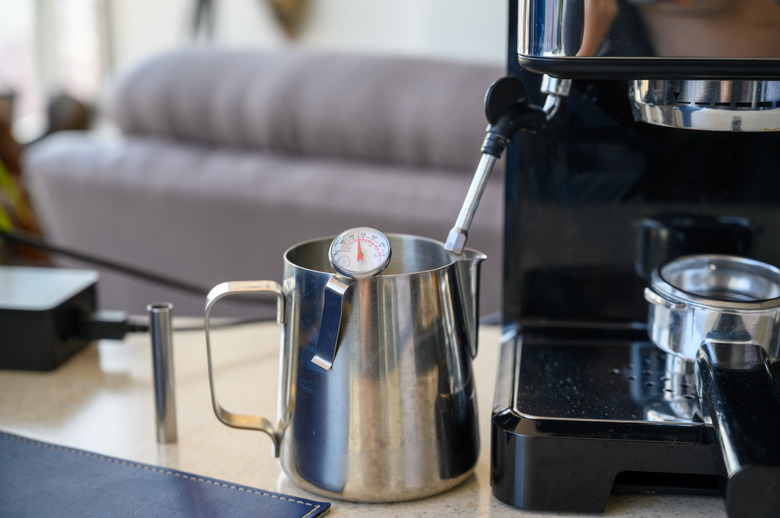How To Clean An Espresso Machine With Vinegar
An espresso machine creates tasty beverages with a lot of high heat and pressure. Hard water is a fairly common occurrence in homes. Calcium and other minerals can cake the inside of the tiny tubes in an espresso maker. Descaling the espresso maker will ensure a good brew and a well-running machine. Cleaning out the espresso machine's inner workings can remove hard water deposits or buildup from coffee oils and grounds.
How an Espresso Machine Works
How an Espresso Machine
Works
Understanding how an espresso machine functions under the best of circumstances can help you to diagnose what may be wrong when it isn't performing up to snuff. Typically, an espresso machine has four areas, according to Clive Coffee. These are the water source, pump, boiler and steam wand, which may also be called the group head.
Water comes in from the reservoir, which is typical for home machines, or a plumbed source, which is generally how commercial machines receive a generous water supply. A water reservoir allows you to choose premium water, such as distilled or filtered, while an espresso machine that uses water from the main supply can be subject to hard water issues.
Espresso machines brew coffee with a ground puck by forcing pressurized water to the near boiling point. The pump has to work hard, about 130 psi, to get water through the tightly packed puck of finely ground coffee. The water hits the boiler or heating element before winding its way to the group head and into the awaiting cup.
Descaling Solution Vs. Vinegar
Descaling Solution Vs. Vinegar
If the water is sputtering or the coffee is not flowing from the espresso machine, then it could be due to an obstruction. The many pipes and small jets of an espresso machine can get clogged from buildup, according to Espresso Parts. Descaling the espresso machine can remove common hard water deposits from the network of tubes and parts within the specialized coffee maker.
Cleaning an espresso machine with vinegar is a safe and effective way to remove the natural oils and dyes that stain the surfaces. Descaling a coffee machine with vinegar is easy and affordable. Mix three parts of vinegar to one part of water and run the machine. Always check the manual to ensure that vinegar can't hurt the espresso machine in strong solutions. If you aren't sure, cut the solution of vinegar and water to 1:1.
A commercial descaling solution works well for more complicated machines and can work well for smaller home varieties. Home Grounds recommends that you use a 100 percent natural commercial descaling solution for the machine and always follow the manufacturer's recommendations.
Citric Acid and Lemon Juice
Citric Acid and Lemon
Juice
Descaling an espresso machine with citric acid also works well. Concentrated powdered citric acid, such as packets of sugar-free lemonade, tend to work better than actual lemon juice. Mix the citric acid powder with water before pushing it through the machine. A mix of 1 teaspoon of citric acid to 1 cup of hot water can work for the initial cleaning.
Flushing the Espresso Machine
Flushing the Espresso
Machine
After cleaning out the espresso machine with vinegar, citric acid or a commercial cleaner, it is important to flush the lines with plain water. This will remove any residue from the cleaner. Particles from the citric acid or powdered commercial cleaner can lodge within the piping system or group head and taint the taste of the brew.
